By Amin Saikal
Amin Saikal is Distinguished Professor of Political Science and Director of the Centre for Arab and Islamic Studies at the Australian National University. He is the author of Iran Rising: The Survival and Future of the Islamic Republic.
Since the 1979 revolution, Iran has weathered a devastating eight-year war with Iraq, international sanctions, domestic power struggles, and many other challenges. How has it survived four decades?
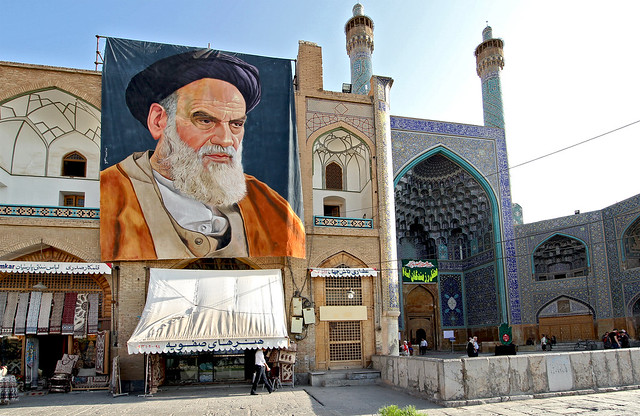
Three key variables account for the Islamic regime’s survival since 1979. First, the regime’s theocratic form of governance has sufficient elasticity to enable it to claim religious legitimacy in diverse circumstances. It also has demonstrated flexibility in its foreign policy, which allows pragmatic actions when survival is at stake. The regime has, at times, been less ideological and more realistic. Second, the Islamic Republic has exploited U.S. failures in the region—notably in Iraq, Afghanistan, Syria and on the Israeli-Palestinian conflict—to expand its own regional influence. Third, it has developed both hard power and soft power that adapts well to an asymmetric defense strategy.
How have rival currents in interpreting Islam – jihadi and ijtihadi – played out in Iran’s political system?
Iran’s theocracy has diverse forms of blending Islam and politics: One faction is the jihadi—or traditionalist and hardline. In this context, jihadi denotes a “combative,” revolutionary, and inward-looking approach to the implementation of Shiite Islam. It advocates rigidly adhering to the utopian principles of the revolution. Jihad denotes the struggle to create an activist Islamic government, a shift within Shiism, which has been historically quietest in politics. Revolutionary leader Ayatollah Ruhollah Khomeini took a jihadi approach during the first years after the Shah’s overthrow. Khomeini was uncompromising, exclusionary, and self-righteous in his efforts to set up his vision of an Islamic order.
The other faction is ijtihadi—or reformist and internationalist. Ijtihadi denotes a creative interpretation of Islam according to changing times and conditions, based on independent human reasoning. It urges adapting Islamic principles to the contemporary world. This faction began to take shape in 1988 when a group of clerics, who supported a moderate, pluralistic Islamic system, formed the Assembly of Assertive Clerics. Key leaders included Mehdi Karroubi, who later became parliamentary speaker (1989-1992, 2000-2004) and Mohammad Khatami, who subsequently became president (1997-2005).
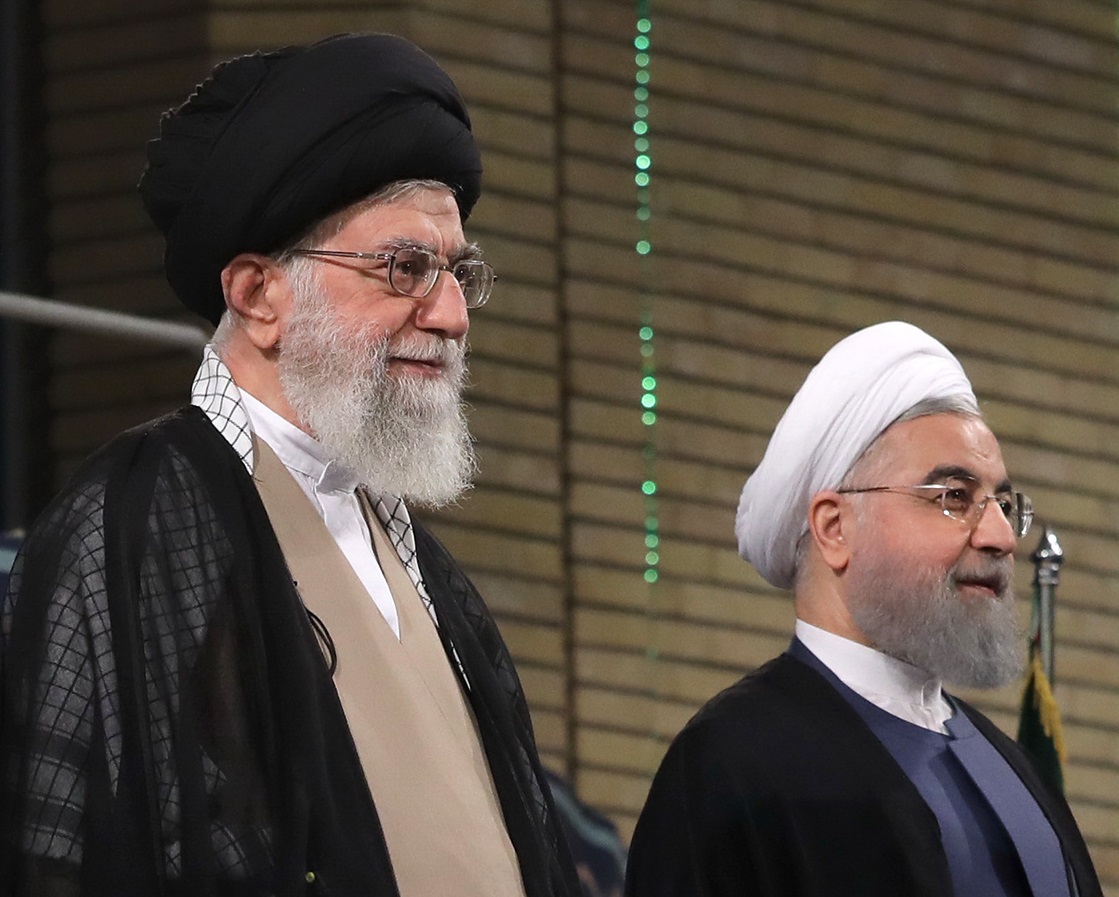
Within the ruling clerical establishment, the two factions cooperated closely during the revolution’s first decade, between 1979 and 1989, under Khomeini. After his death in mid-1989, however, the divide deepened under his successor, Ayatollah Ali Khamenei. Hardliners controlled many levers of power; they advocated an inward looking processes of domestic change and development, and a confrontationist foreign policy. Reformists envisioned a less dogmatic direction.
President Hassan Rouhani, who was elected in 2013 and reelected in 2017, received more backing from Supreme Leader Khamenei than any of his predecessors. But he struggled to convince hardliners to embrace his centrist agenda. He campaigned on promises of repairing Iran’s dire economic situation, negotiating a nuclear deal with the international community, and releasing Iran’s political prisoners. He succeeded in orchestrating the 2015 nuclear agreement (officially known as the Joint Comprehensive Program of Action) with the world’s six major powers, but he has achieved few of his domestic reforms. Iran’s jihadi faction, which had warned Rouhani against trusting the United States, got a boost after President Donald Trump withdrew from the nuclear pact in May 2018 and designated the Revolutionary Guards as a terrorist group in April 2019. The Revolutionary Guards and the Basij paramilitary are largely the guarantors of the jihadi current.
How have Iranians channeled their views into politics? What have been the patterns in Iranian elections?
In spite of myriad domestic and foreign policy challenges, the Islamic regime has held presidential and parliamentary elections regularly since 1979. Yet in all elections, candidates have been vetted—for their religious and ideological credibility—by the powerful 12-man Council of Guardians. The electoral system is thus a form of religious ‘polyarchy’ for formal, but not substantive, representative government. Choices are limited to competing elites. So voters have expressed their views within such limits.
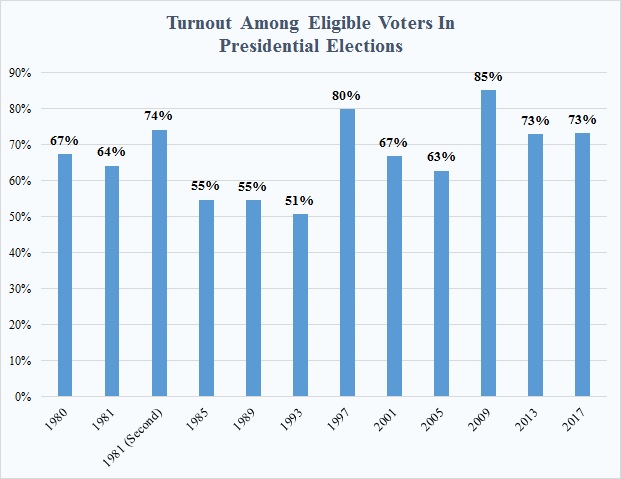
Source: Iran Data Portal (data from the Ministry of Interior)
Iran’s population is now dominated by a post-revolution generation born in the 1980s. What impact has this generation had in changing the regime’s goals?
The post-revolutionary generation is indeed on the rise. This generation, now a majority of Iran’s 83 million people, has little or no memory of the 1978/79 revolution or Ayatollah Khomeini. Many of this younger generation seek political and social freedoms; they have earnestly sought to get around theocratic restrictions. They have spawned an underground counterculture that the authorities have found difficult to control.
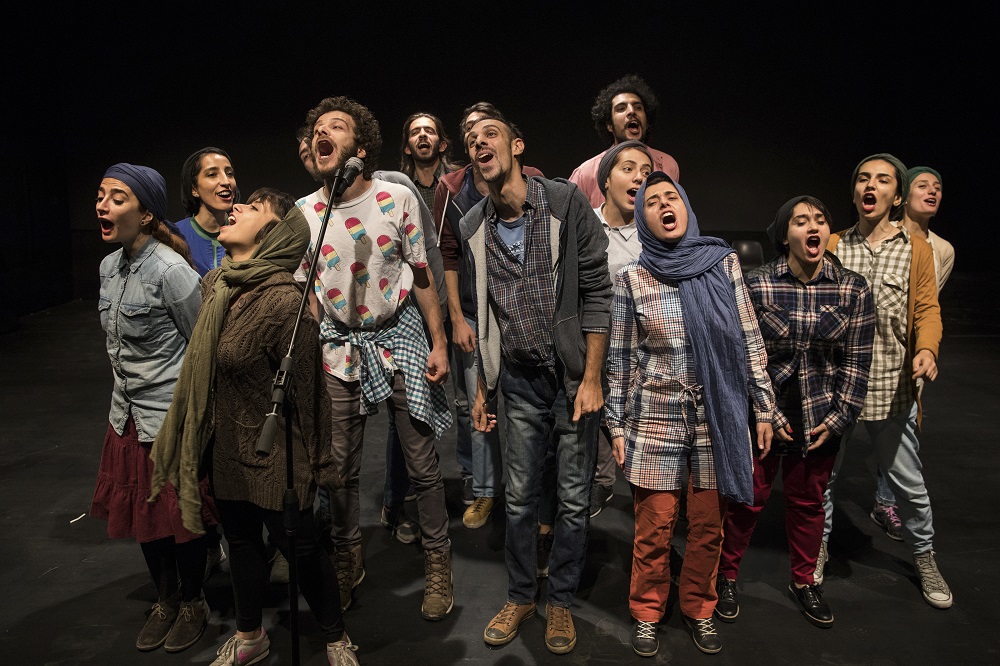
The question of succession looms over the future of the Islamic Republic. In 2019, Supreme Leader Ayatollah Ali Khamenei turns 80. Who are the most likely candidates to succeed him?
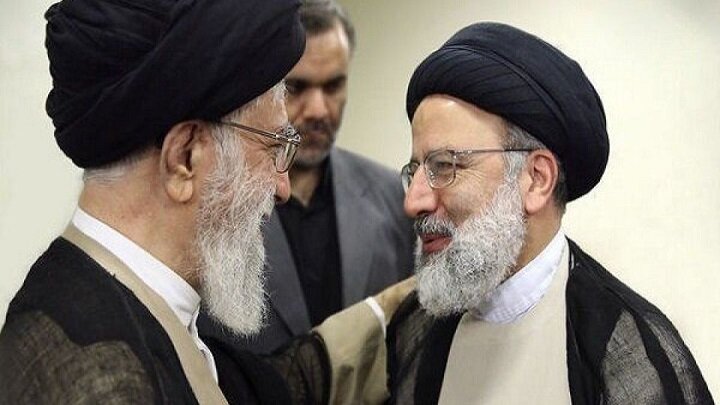
During his first three decades in power, Khamenei has not designated a favoured political heir. Ebrahim Raisi has gained attention as a possible candidate after he ran for the presidency against Rouhani in 2017, even though he lost by a wide margin. He is a conservative cleric from Mashhad who has served in multiple roles, including Attorney-General. In March 2019, Khamenei appointed him to head the powerful judiciary.
The supreme leader is chosen by the Assembly of Experts with 82 members who are elected every eight years. It can select one from its own ranks or from outside. The process could involve horse-trading among rival factions or personalities. Whoever emerges will have a significant impact on the future direction of the Islamic Republic.
If Khamenei’s successor is a conservative or hardliner, the balance of political power – between jihadis and ijtihadis—is likely to remain the same. So would both domestic and foreign policies. If the next supreme leader comes from among the centrists or reformists, there could be a shift in favour of the ijtihadis seeking wider political, social and economic reforms and openings in foreign policy.
